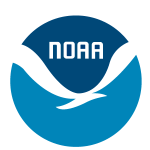- Industrie: Government
- Number of terms: 30456
- Number of blossaries: 0
- Company Profile:
NOAA Coral Reef Conservation Program, National Oceanic and Atmospheric Administration, U.S. Department of Commerce
An advisory committee of a regional fishery management council (FMC) composed of scientists, economists, and other technical experts. The Magnuson-Stevens Act requires that each council maintain an SSC to assist in gathering and analyzing statistical, biological, ecological, economic, social, and other scientific information that is relevant to the management of council fisheries.
Industry:Fishing
A fishery where the fish caught are shared and consumed directly by the families and kin of the fishers rather than being sold at the next larger market.
Industry:Fishing
1. The spatial organization of a species in terms of the genetic structure of the species across geographic space (e.g., a species of large pelagic fish (tunas) may be composed of three separate stocks in the North Atlantic, South Atlantic, and Pacific Ocean); 2. The structure of a particular stock, in terms of its size or age composition or in terms of its species composition (for a multispecies stock).
Industry:Fishing
A person with power to influence or determine policies and practices at an international, national, regional, or local level.
Industry:Fishing
An appreciation of the situation of a stock, usually expressed as: protected, underexploited, intensively exploited, fully exploited, overexploited, depleted, extinct, or commercially extinct.
Industry:Fishing
1. A mathematical formula (model) that relates one biological factor to another. Once a mathematical relationship is established, scientists use the model to predict one factor over another; 2. A statistical procedure similar to an analysis of variance or a multiple regression that is used to estimate the magnitude of the effects of different factors on a variable of interest. GLM's are the tool of choice for standardizing catch per unit effort (CPUE) data in order to obtain indices of abundance. In such applications, the variable of interest is CPUE and the factors are year and perhaps others such as area, gear configuration, etc. ; the standardized abundance index of annual abundance would then be given by the parameters associated with the factor, year.
Industry:Fishing
A certified person on board fishing vessels who collects scientific and technical information on the fishing operations and the catch. Observer programs can be used for monitoring fishing operations (e.g. areas fished, fishing effort deployed, gear characteristics, catches and species caught, discards, collecting tag returns, etc. ). Observers may or may not have legal coercion powers and, their data may or may not be used for nonscientific purposes (e.g. enforcement) depending on the situation.
Industry:Fishing
1. To undertake any activity that results in taking fish out of its environment dead or alive. To bring fish on board a vessel dead or alive; 2. The total number (or weight) of fish caught by fishing operations. Catch should include all fish killed by the act of fishing, not just those landed; 3. The component of fish encounter-ing fishing gear, which is retained by the gear.
Industry:Fishing
A component of an estimation model, that defines the criteria for how the observations are fitted. Statistical models include least squares, maximum likelihood, Bayesian, and ad hoc procedures.
Industry:Fishing
Any vessel-for-hire engaged in recreational fishing and hired (or leased, in whole or part) per a per-capita fee on a first-come, first-served basis.
Industry:Fishing
